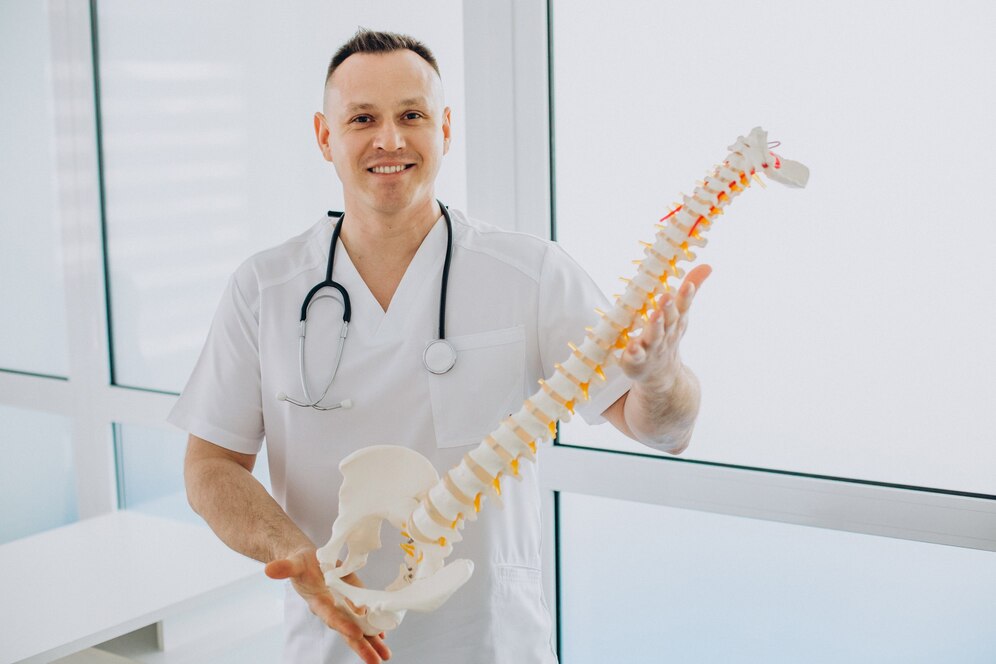Orthopedics and Lower Back Pain: Causes, Treatments, and Recovery
Lower back pain is one of the most common musculoskeletal issues, affecting millions worldwide. Orthopedics, a medical specialty focused on the musculoskeletal system, plays a crucial role in diagnosing and treating lower back pain. This article explores the causes, symptoms, and treatment options for lower back pain and highlights how orthopedic care can help.

Common Causes of Lower Back Pain
Lower back pain can result from various factors, including:
- Muscle Strains: Overuse or sudden movements can lead to muscle pulls or spasms.
- Disc Problems: Herniated or bulging discs compressing nerves may cause sharp pain.
- Spinal Conditions: Issues such as spinal stenosis, scoliosis, or degenerative disc disease.
- Arthritis: Osteoarthritis in the spine can cause stiffness and chronic pain.
- Sciatica: Compression of the sciatic nerve leading to radiating pain down the leg.
Other causes may include poor posture, obesity, or injuries from accidents.
Symptoms of Lower Back Pain
- Dull aches or sharp pain localized in the lower back
- Pain radiating to the buttocks or legs
- Stiffness and difficulty moving
- Numbness or tingling sensations in the legs
- Muscle weakness affecting mobility
Orthopedic Treatment Options
Orthopedic specialists use a range of treatments to address lower back pain:
- Non-Surgical Treatments:
- Physical Therapy: Exercises to strengthen core muscles and improve flexibility.
- Medications: Anti-inflammatory drugs or muscle relaxants to reduce pain and swelling.
- Injections: Epidural steroid injections for temporary relief from nerve inflammation.
- Lifestyle Modifications: Weight management and ergonomic adjustments to reduce strain on the spine.
- Surgical Interventions:
- For severe cases like herniated discs or spinal instability, procedures such as spinal fusion or discectomy may be recommended.
- Alternative Therapies:
- Chiropractic care, acupuncture, and yoga can complement traditional treatments by improving posture and reducing stress on the spine.
FAQs
1. What are the most common causes of lower back pain?
Muscle strains, disc problems (e.g., herniated discs), spinal conditions like stenosis or scoliosis, arthritis, and sciatica are common causes.
2. When should I consult an orthopedic specialist for lower back pain?
If your pain persists for more than 12 weeks or includes symptoms like numbness, tingling in the legs, or difficulty walking, consult an orthopedist.
3. How does physical therapy help with lower back pain?
Physical therapy strengthens core muscles, improves flexibility, corrects posture, and reduces strain on the spine.
4. Are surgeries always necessary for lower back pain?
No, surgeries are typically reserved for severe cases like herniated discs or spinal instability when conservative treatments fail.
5. Can lifestyle changes reduce lower back pain?
Yes, maintaining a healthy weight, practicing good posture, using ergonomic furniture, and engaging in regular exercise can prevent or alleviate lower back pain.
Step into our clinic, where your comfort and health are our priorities. Our dedicated team is here to provide effective treatments for lower back pain and other orthopedic conditions. Visit us at https://specialtycareclinics.com/ or call us at (972) 865 4454 to schedule an appointment. Walkins & new appointments available.
